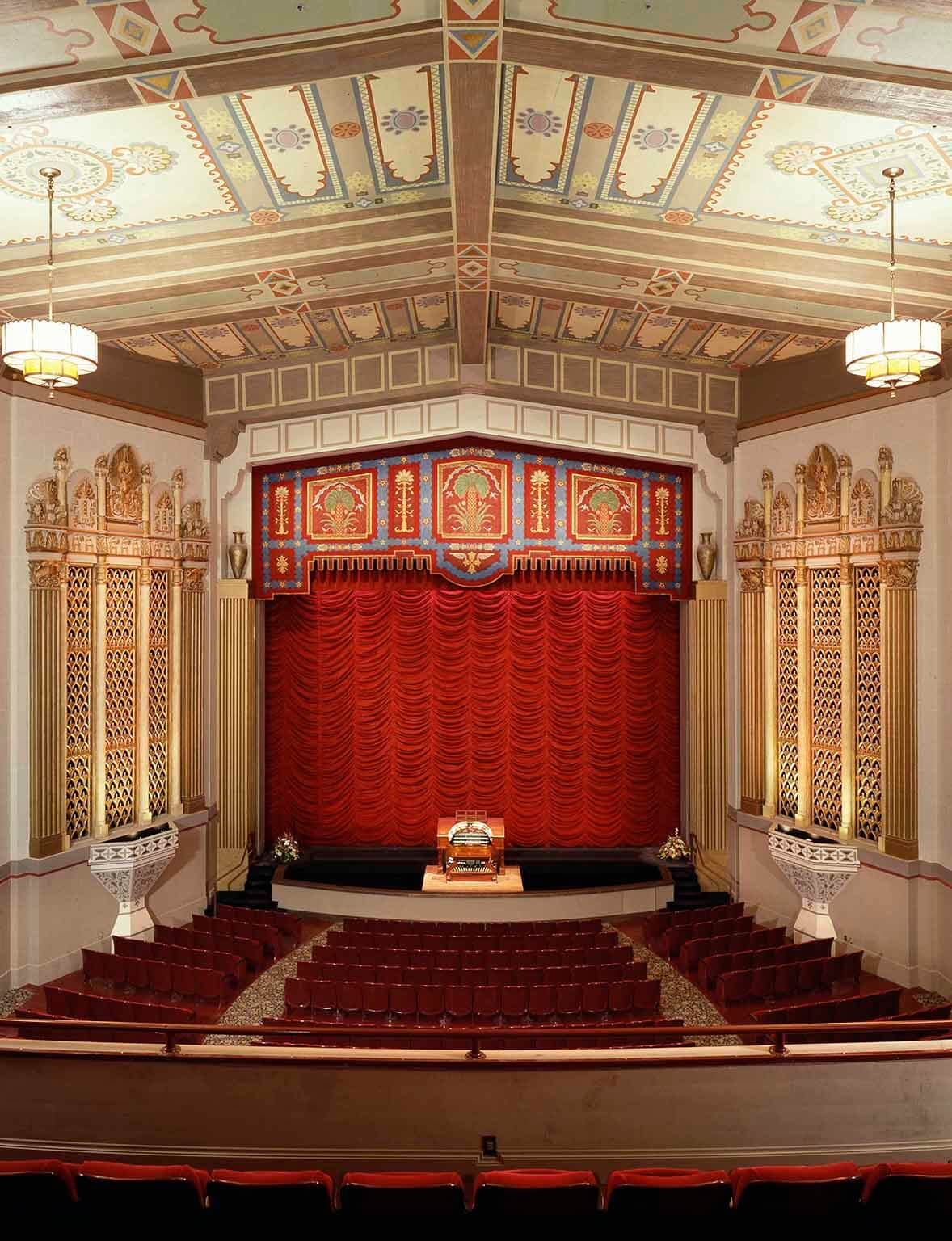Words by Johanna Harlow
For almost a century now, the Stanford Theatre has inhabited downtown Palo Alto. It’s watched shops and decades emerge—and then dissolve. It’s listened as the gravel-y rattle of boxy Ford Model Ts on the street outside gave way to the revving rumble of tailfinned Cadillacs, then to the silent whisper of sleek Teslas. It’s welcomed audiences dressed in pinstripe suits and flapper dresses, tie-dye shirts and flared pants, flowing maxis and khakis.
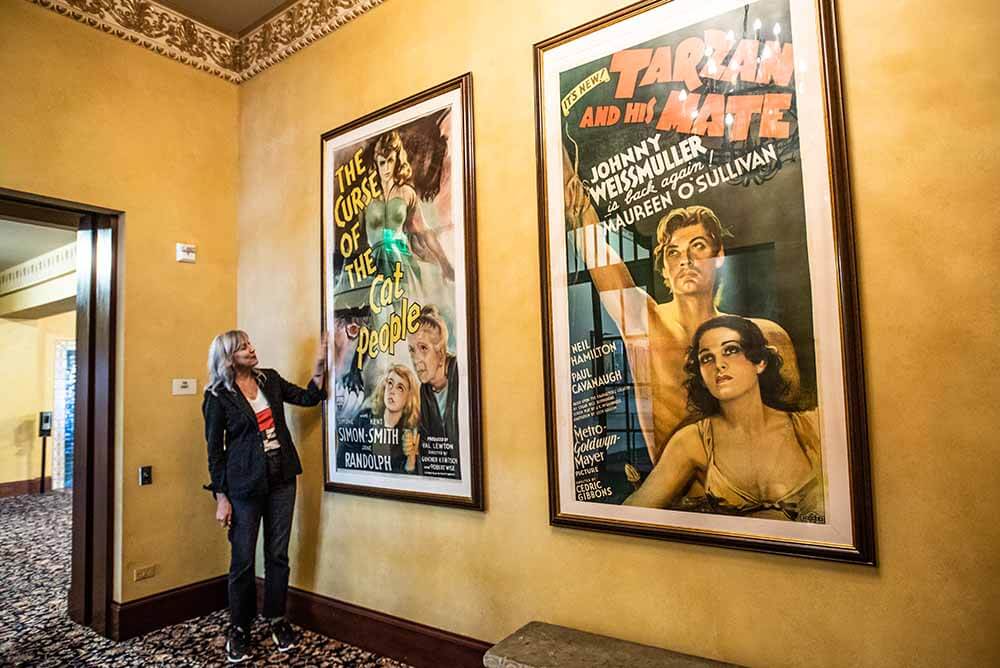
The theatre’s historical weightiness continues to draw in passersby today. As soon as you make eye contact with the majestic marquee sign above its entrance, the pull is almost irresistible. If you allow it to, the theatre will tug you in through its doors, sweep you across a grandiose, chandeliered lobby, escort you up a blue tiled staircase and, finally, settle you into a red velvet balcony seat. As the crimson curtain parts and a classic black and white movie begins, you’ll have fully traveled back in time.
In the summer of 1925, this neighborhood movie palace opened to great fanfare. The mayor gave a speech. Reginald Denny, star of that night’s motion picture, made an appearance. The newspapers applauded the building’s modern ventilating system, remote-control switchboard system and crushed silver curtains. They marveled at its walls and ceiling coated in Greek-Assyrian paintings and made note of the maid in attendance in the “women’s retiring room.”
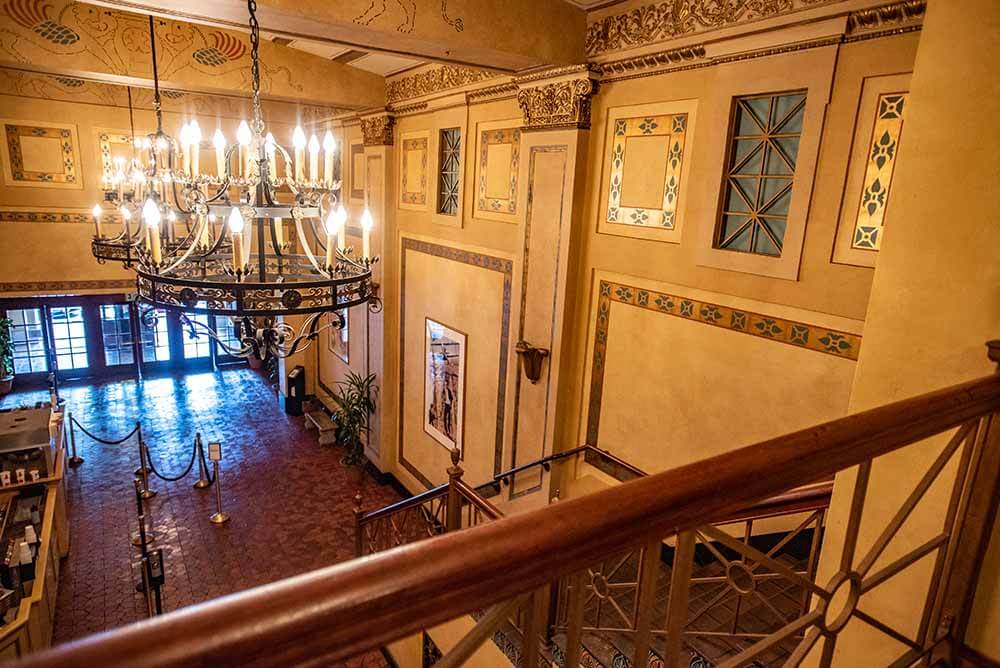
These days, you won’t be greeted by an attendant when you visit the washroom, but you’ll still witness décor identical to that of opening night. This hasn’t always been the case. By the time the ’80s rolled around, the Stanford Theatre had spiraled into disrepair. “It was a ramshackle, falling-apart, poor old skeleton of a theatre,” describes Cyndi Mortensen, general manager at the Stanford Theatre and the Stanford Theatre Foundation (the nonprofit that runs it). As it bounced from owner to owner, the elaborate Greek-Assyrian details were painted over, the organ removed. The layer of grime thickened, the seats rusted. Gone were the days dancers, ventriloquists, acrobats and other performers traveled to entertain in vaudeville acts accompanying the movie. Before long, the theatre was reduced to screening second-run action flicks for 50 cents (a dime cheaper than ticket prices here over half a century earlier).
Fortunately, that’s when David W. Packard, the son of one of Hewlett-Packard’s co-founders, burst onto the scene. After beloved singer, dancer and actor Fred Astaire passed away in 1987, Packard rented out the theatre for two weeks to commemorate every movie the star ever made. His modest goal was getting at least 50 people to attend. Instead, more than 1,000 moviegoers lined up each night to savor the spellbinding tap-dance numbers of Astaire in his trademark top hat and tails. After such a remarkable success, Packard convinced his father and the Lucile Packard Foundation to purchase the theatre and grant him stewardship so that movies from the silent era through 1965 could return once again to the big screen.
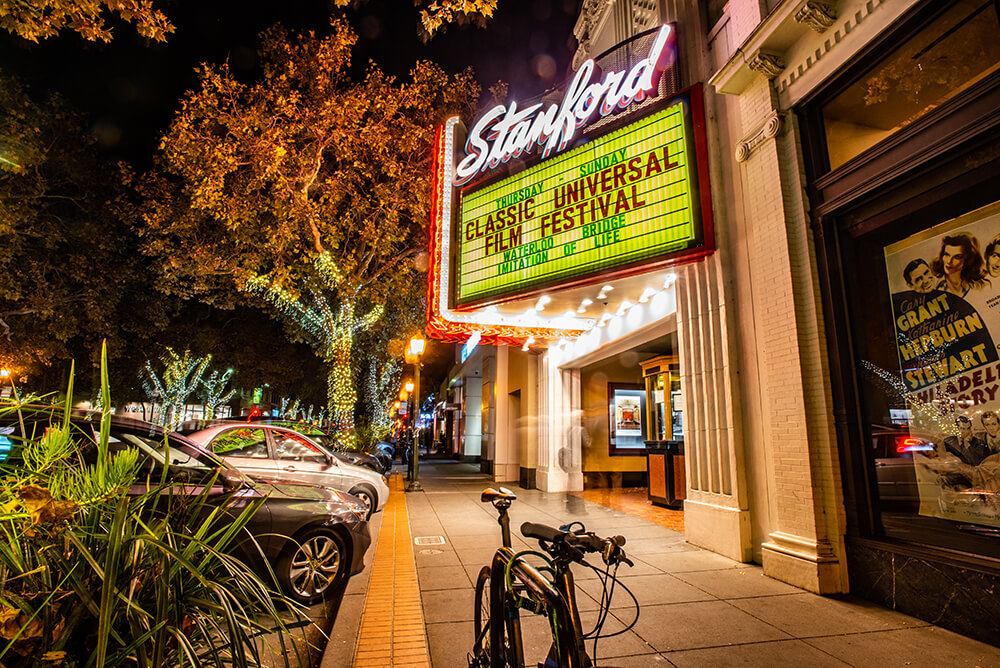
Coming from a professorial background, Packard unsurprisingly took great pains to reconstruct the theatre’s majestic original appearance. He spent close to two years and $6 million on renovations—a sizable hike from the $300,000 and less than a year it took to initially build the theatre. With the help of a black-and-white photograph and original watercolor sketches, Packard oversaw the return of the Greek-Assyrian detailing. He also restored the period chandeliers, stage pillars, seats and curtains.
But the crowning glory of this jewel box theatre was the Mighty Wurlitzer organ. It took six experts nearly two years to acquire and restore its pieces. Every night since its reopening, the Wurlitzer and its accompanying organist rises out of the stage floorboards during intermission to astound theatergoers with its musical complexity of keys, bells and pedals. “It’s something that people don’t forget,” Cyndi says.
Packard is also behind the carefully crafted movie lineup. “He has very good instincts about these things,” remarks Cyndi, who occasionally contributes ideas herself as well as tracks down 35mm reels from studios and archives. Programs range from genres (like screwball comedies), to directors (like Alfred Hitchcock), to actors (like Jimmy Stewart). In the summer, they spotlight all-time greatest hits.
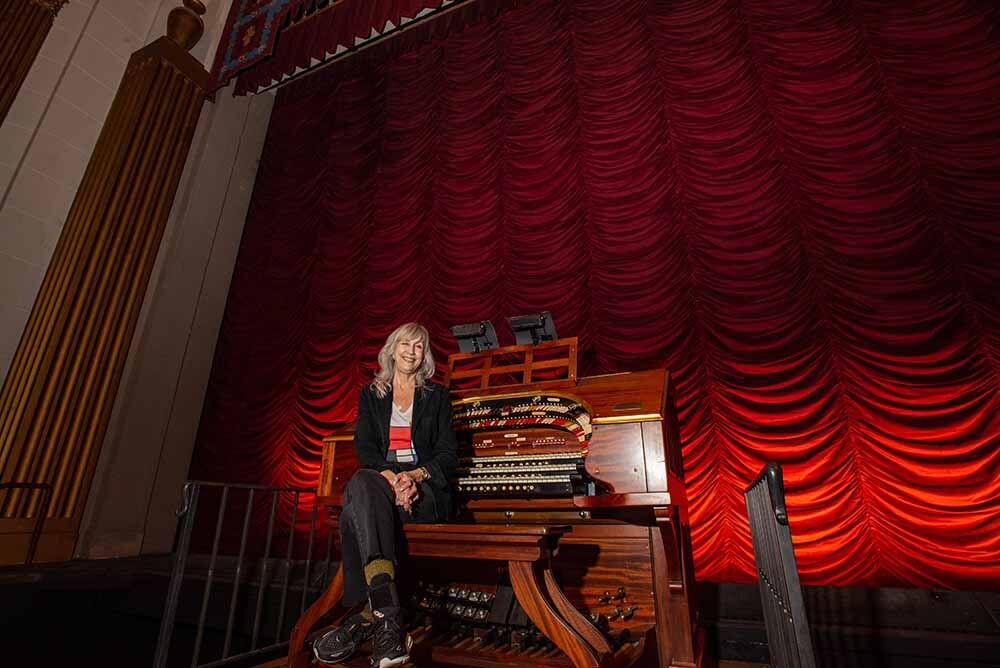
The most beloved films? “Casablanca hands down,” Cyndi responds. It’s hard not to fall in love with the movie’s suave, affably cynical hero and clever dialogue. (“Here’s looking at you, kid.”) On the film’s 50th anniversary, more people watched the iconic classic here than anywhere else in the country. Other crowd favorites include Wizard of Oz and Gone with the Wind. All three were released between the Golden Age years of 1937 to 1947, which Packard considers the peak of film as an artform. Movies starring Audrey Hepburn or Cary Grant also draw a dedicated following. And, of course, there’s the annual Christmas Eve showing of It’s a Wonderful Life, so adored that people start asking about tickets in July.
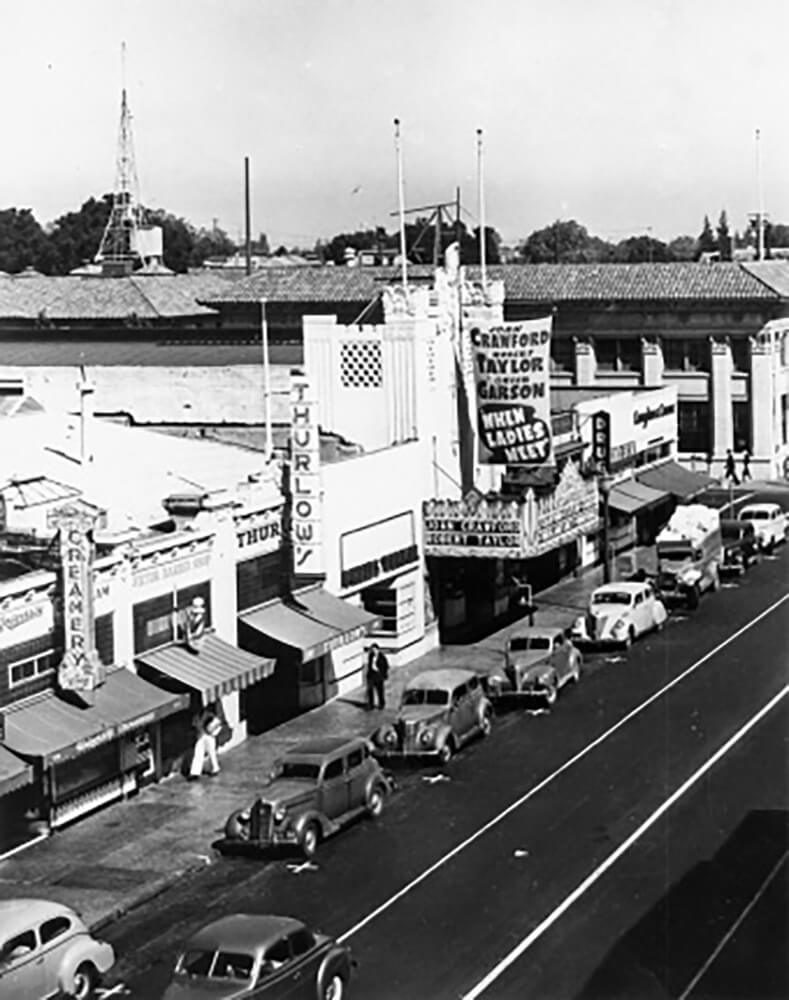
“I think most people would assume that we have mostly senior citizens,” Cyndi notes. “We do have some, but we also get all different ages.” Parents enjoy introducing their kids to films they themselves grew up with. “We get these young teenage girls dressed as Holly Golightly. Which is really cute, but I don’t know whether she’s a great role model,” Cyndi chuckles, referring to the main character of Breakfast at Tiffany’s—a high-end escort who sparks with Paul, the “kept” companion of a wealthy socialite. Cyndi also fondly recalls a group of elementary schoolers who showed up dressed as the squirrelly bespectacled actor Harold Lloyd.
Then of course, there’s the Stanford students. They’ve been a core audience at the theatre since the very beginning—for better and for worse. Its close proximity to a college campus inevitably means student hijinks. One such shenanigan dates back to the night of November 7, 1929, when 150 first-years in pajamas rushed the theatre (without paying) and stormed the balcony for a screening of Our Gang. Another night, after the theatre’s restoration, a group of Stanford ballroom dancers twirled down the aisles as the organist played a tango from Astaire’s Flying Down to Rio.
If that wasn’t enough personality for one building, Packard added a gallery, stocking it with original movie posters, newspaper clippings and other ephemera. Cyndi acts as curator, switching out items to match the current program. During the months of “Hitchcock and Other Masters of Suspense,” the walls were bedecked in artistic renderings of intense action shots—like Cary Grant sprinting away from a dive-bombing plane and Grace Kelly struggling to break free from a strangler’s grasp. On special occasions, screenings feature actors’ costumes on display or, better yet, appearances by the actors themselves.
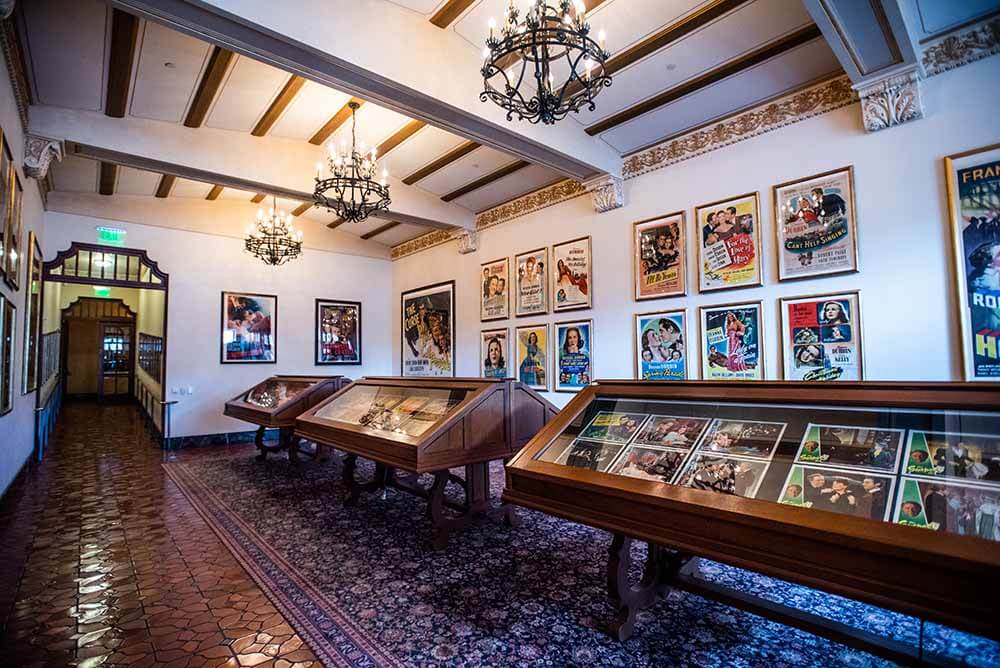
Why do old movies continue attracting modern audiences? “I think it has something to do with classic Hollywood acting,” Cyndi muses. “People don’t act like that anymore.” Bygone eras—and the cultures they cultivated—mean a unique approach to storytelling. We’re enthralled by the differences in dress, home life and social norms—but also anchored by those timeless themes. We still empathize with feelings of frustration over injustice, heartbreak over unrequited love, amusement over minor miscommunications. “They continue to move us, speak to us, make us laugh, make us cry,” Cyndi notes. “They have heart. They resonate. They may be old—but they don’t get old.”


